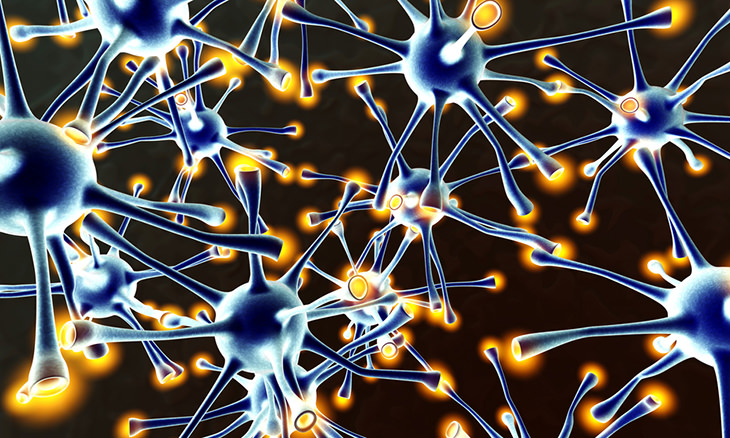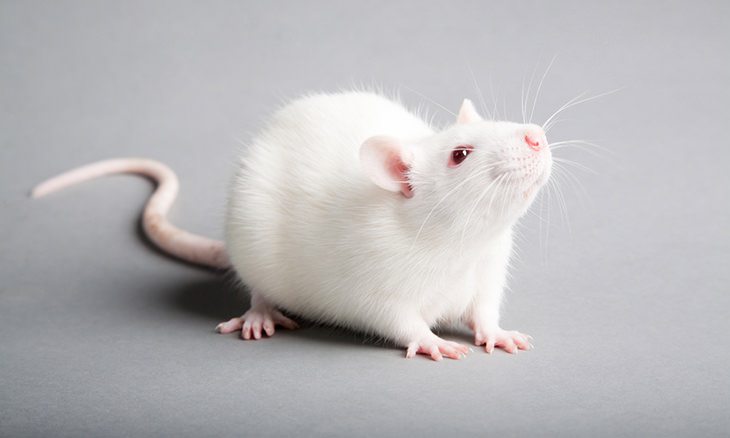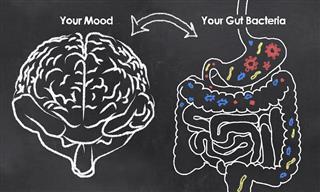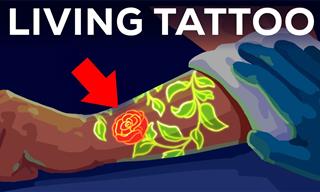
New experiments conducted on mice have indicated that restoring brain plasticity might hold the key to reversing age-related cognitive decline.
The experiments focused on inhibitory interneurons in the visual cortex. These sensory neurons have rarely been studied to date, however, they’re believed to be crucial to brain plasticity.
Mice at several key ages were used in the study, and this was important because the researchers wanted to track the decline in inhibitory brain cells as the mice aged. The research found that there was no significant age-related decline to speak of.

With that being said, the researchers did note a decline in several plasticity markers. The growth of dendrites, which are branches that connect neurons to each other, were observed to slow down progressively between the ages of three (when mice reach maturity) and 18 (when mice can be considered old) months. This is one of the key factors that prevents the brain from remodeling itself, thus reducing plasticity.
Another plasticity marker that was used for measurement is the stimulus-selective response potentiation. It essentially allowed the researchers to see how well the mice responded to visual stimuli, and they found that these responses declined with age. In fact, SRP measurements were solid for three months, but almost nonexistent by the time they reached nine months.

Last but not least, the researchers devoted the final part of the study to finding out whether plasticity reduction in the mice’s brains could be reversed. They used a drug called fluoxetine, which is more commonly known as Prozac, in three-month-old mice. They were treated with the drug for at least six months and displayed significant improvements in all plasticity markers.
"Our finding that fluoxetine treatment in aging mice can attenuate the concurrent age-related declines in interneuron structural and visual cortex functional plasticity suggests it could provide an important therapeutic approach towards mitigation of sensory and cognitive deficits associated with aging provided it is initiated before severe network deterioration," the researchers wrote.

Although the new hypothesis for normal age-related decline is compelling, using fluoxetine as a therapeutic agent isn’t especially practical. For instance, its side effects mean that it isn’t recommended for use by the elderly, and it would have to be administered at a young age, and for a very long time, for it to have any effect. The latter points are also based on the assumption that the drug’s effects on mice could be replicated in humans, which would take years of clinical trials to prove definitively.
Nevertheless, the study found that a decline in brain plasticity has the potential to be reversed, meaning that age-related cognitive decline we’ve come to accept as just part of getting older might actually be able to be managed in the future.
Images by Deposit Photos.

Have Scientists Just Found a Wonder Cure for Alzheimer's?
In 2015, researchers in Australia made a breakthrough in the treatment of Alzheimer's. Hopefully this year, they will be able to try this treatment on humans.

What is the Connection Between Dogs and a Long Life?
As if we need more proof that dogs are amazing, a new study confirms owning a dog is linked to living longer.

Did You Know You're Intelligent If You Have These Traits?
There are certain signs of intelligence that are actually quite subtle. Here are 10 subtle signs that are hallmarks of intelligence.

This Study Shows Where People Need to Be Touched
Touching is vital for human development in children, and it's also vital for the strength of familial and romantic relationships. Learn more here.

Can Probiotics Improve Mental Health? Research Says YES
Studies repeatedly show that probiotics can be a potentially effective treatment for several mental health issues. This is what is currently known on the topic.

Determine If You're a Type D Personality With This Guide
The D in Type D personality stands for "distress", which refers to the heightened level of the emotion that Type D people tend to feel. Find out more here.

Four Great Tips for Hosting Guests With Food Allergies
The holiday season is a time for friends, family, and loved ones to come together under one roof and share meals. With so many gatherings during this festive period, there's a good chance you'll be hosting someone with food allergies at your table.
 21:51
21:51
What Will the Universe Look Like in 10 Quintillion Years?
These questions take us beyond science into the realm of imagination, as we contemplate the ultimate fate of our Universe and everything within it.

6 Signs That Someone is Listening on Your Cellphone Calls!
With technology advancing all the time, there is the ever-increasing chance of our phones being tapped. Here are 6 signs that your phone could be tapped.

9 Great NASA Inventions That Took the World By Storm!
For around six decades, NASA have been inventing top-notch products. Here are nine great examples!

12 Steps That Help to Explain Einstein's Famous Theory
Have you ever wondered what Einstein's Theory of Relativity is all about? If you have, here is an easy-to-understand explanation!
 9:15
9:15
These Bizarre Mysteries Continue to Stump Scientists!
The world of science hasn't been able to explain several bizarre phenomenon yet. Let's take a look at a few of them.

The Most Remarkable Medical Breakthroughs of 2024
Here’s a look at some breakthroughs in medical innovation this year.

These 18 Photos Capture the Universe Like Never Before!
See the universe in a new light with these astonishing photos.
 20:32
20:32
History: Did the Trojan War REALLY Happen?
The Trojan War, the most famous of the ancient wars, fought by thousands of men for ten long years on the beaches of the famed city of Troy. Was all that real?

See the World From Up Close - 17 Fascinating Macro Photos
Seeing ordinary objects like honey, paracetamol, and snow through a microscopic lens teaches us how beautiful and intricate they really are!
 7:21
7:21
Science: 20 Mechanical Principles Demonstrated Using Lego
In this video, we'll explore a variety of fascinating mechanical mechanisms, all demonstrated using Lego models.

Enjoy This Fascinating Collection of NASA's Best Photos
Here are 15 of NASA's most amazing recent pictures, along with brief explanations of exactly what is going on in each one.
 8:48
8:48
Fascinating: What Around Us is Invisible?
The Invisible Things that Turn the World...

14 Times Nature Inspired Groundbreaking Technology
Let’s explore 14 remarkable examples of how nature has shaped modern technology.
 5:28
5:28
Just How Small is an Atom? - Fascinating!
Just how small are atoms? And what's inside them? The answers turn out to be astounding...
 8:46
8:46
Science: What is Reality? Dive in and Find Out!
What if everything you see, feel, and experience isn’t real? The simulation argument suggests that our reality might be nothing more than an advanced computer program.
 8:12
8:12
How Humans Helped Cats Take Over the World
The relationship between humans and cats goes back as far as 9,500 years. How did it al start? And how did humans help cats essentially take over the world?
 5:14
5:14
Earth 2125: A Vision of the Future of Our Planet
Exploring what Earth could look like in 2125 reveals exciting potential.
 9:09
9:09
Protective Measures: How Our Body Reacts to a Tattoo
In this video, we’ll explore the microscopic war raging beneath your skin, where millions of your cells make the ultimate sacrifice to lock that ink in place, turning a defense mechanism into lifelong art.
 2:03:03
2:03:03
Full Documentary: From First to Last Dinosaur
With stunning visuals and cutting-edge science, we’ll bring their story to life—from their very first day to their last, a saga of survival, adaptation, and mystery.
 18:21
18:21
Fascinating: How Do Cats TRULY See Humans?
Understanding a cat's world is the key to strengthening your bond. Let's decode your cat's mind!

Chronically Late? What Science Has to Say About You
There are 8 positive things that science says about late people that we all need to know.
 5:50
5:50
Why Do We Sometimes Hallucinate? Find Out Here!
In this informative TED-Ed video, Elizabeth Cox details the science of hallucinations.

8 Important Inventions That Were a Complete Accident
It might be interesting for you to learn that some very important scientific innovations were born as a result of an accident.

13 Forgotten Phone Designs That Were Too Odd to Survive
From pen-shaped dialers to phones that clipped onto your clothes, here’s a look at the most unusual phones ever made.
 8:28
8:28
Could These Signals Be A Sign of Extraterrestrial Life?
Scientists have recently picked up on a mysterious radio signal from space, and it could mean a lot - maybe even a sign from extraterrestrial life forms.
 11:02
11:02
Ever Wonder What Ancient Egyptian Sounded Like?
Researchers have used all the information we know to create what they think it may have sounded like.
 5:17
5:17
How Exactly Do We Hear? All is Revealed Here!
In this informative TED-Ed video, Douglas L. Oliver explains the complete science behind hearing.
 50:02
50:02
Take a Trip Through the Universe and Witness its Beauty
Since its launch, the Hubble Telescope returned images of unprecedented beauty of a dynamic and changing universe. Take a look!
 11:28
11:28
India Built a Monster Dam That Controls the Weather!
The Polavaram Dam doesn't just control floods - it moves water between regions and much more!
 17:03
17:03
What is a Ballistic Missile and is Its Purpose?
Why is the ballistic missile so feared, and what exactly qualifies it as such - will all be explained in this informative video.
 7:56
7:56
These 6 Chemical Reactions Changed the Course of History
Although we rarely pay much attention to the chemistry that constantly surrounds us, these 6 reactions changed history.
 1:44
1:44
You Won't Believe What the Human Body Does in One Minute
How much do you think it is capable of doing in a single minute? Watch this video and you'll have your answer!

Nobody Believed These 5 Scientists, But They Were Right
These 5 scientists were shamed and ousted, or rudely ignored, although years later, their "crazy" theories turned out to be true...
 4:57
4:57
Fascinating: How Does Our Digestive System Work?
This video explains how the human digestive system does its daily.
 2:11
2:11
Here are Some Unique Tricks You Can Do at Home With Salt!
This video shows us a few interesting magic tricks that you can do anytime using salt, ice, and other items you can find at home.
 3:55
3:55
50 Years Later, We're Debunking the Moon Landing "Hoax"
How do we prove to people the moon landing was real? By answering their doubtful questions in this video.
 33:02
33:02
The Entire Story of Earth in 30 Minutes!
The story of our planet, from birth to the adult, ancient planet we see before us today - all in just half an hour.

What is the Troxler Effect and How Does it Affect You?
Learn about Troxler's effect and the optical illusions it creates in life.

14 Retro Inventions That Stunned Crowds Back in the Day
These inventions were the talk of the town back in the day.
 9:54
9:54
Neo: The New Tele-Robot that "Cleans" Your Home
Neo is a new robot that has great capabilities and is designed to clean your home. Sounds perfect right? Well, there's a catch.

Blood Test Breakthrough Transforms Leukemia Diagnosis
This research demonstrates that rare circulating stem cells in blood carry the same diagnostic information as bone marrow samples, enabling doctors to identify disease progression months before clinical symptoms appear.
To enable your Ad-Free Subscription, please fill the fields below
Your subscription was successful, now you can enjoy an ad-free experience!! Note: To make sure you get no ads, please make sure to log in to your account. If you are logged in already, then refresh the page. The subscription can be cancelled at any time.


